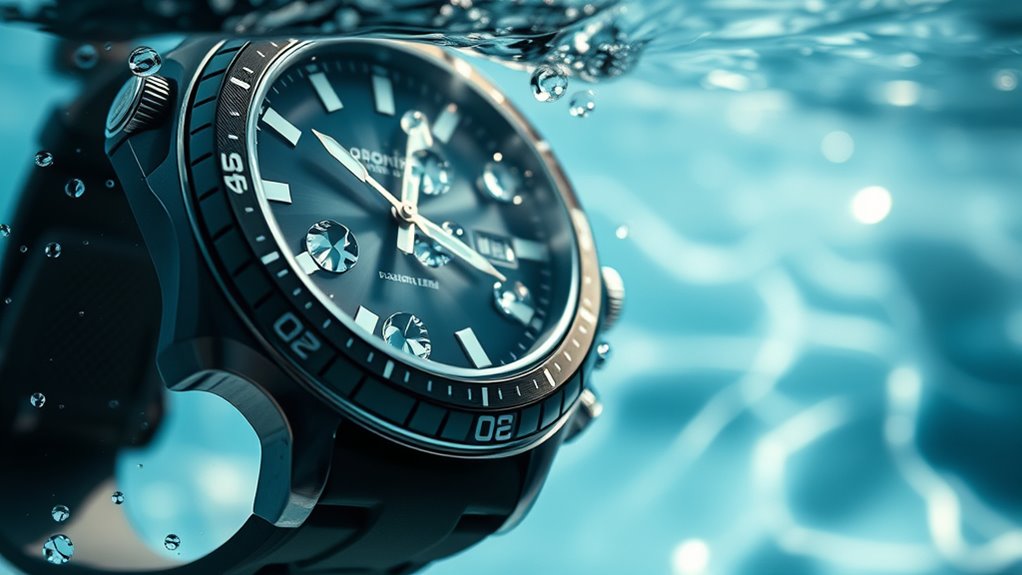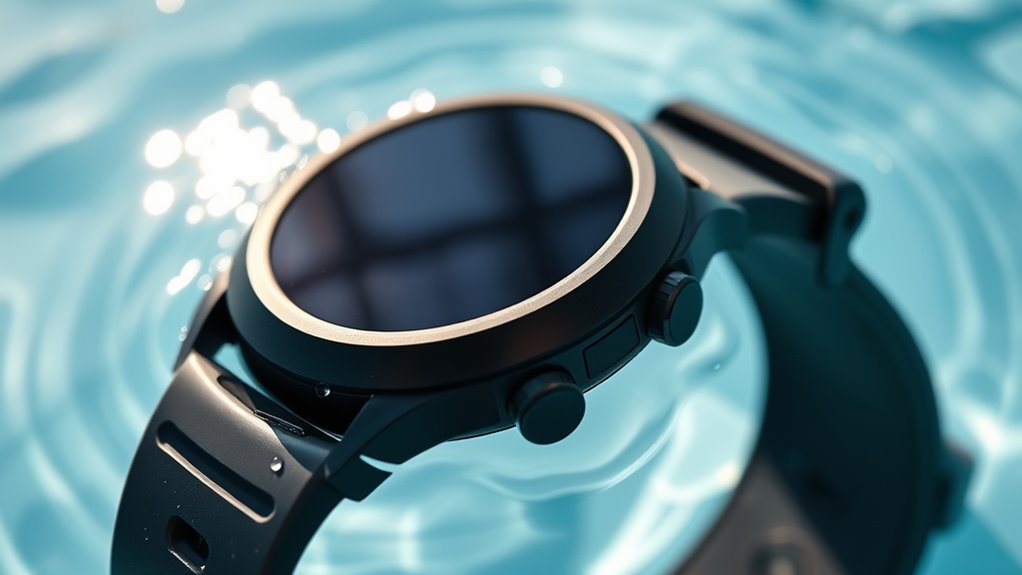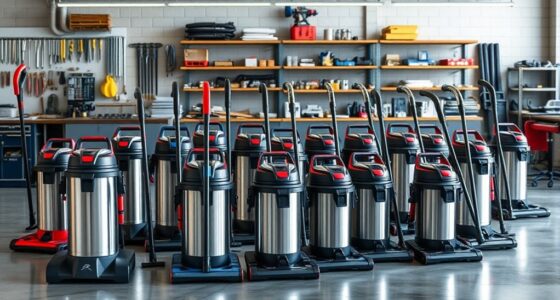Water resistance ratings tell you how well your watch can handle water exposure, but they can be confusing without knowing what standards and tests are behind them. Ratings like 50 meters mean it can survive splashes, rain, and swimming, but not diving. These ratings are based on controlled pressure tests and specific materials used in construction. To protect your watch properly, understanding these ratings helps—keep exploring for more details about what they truly mean.
Key Takeaways
- Water resistance ratings indicate a watch’s ability to withstand water under specific standardized conditions, not all water activities.
- Ratings are based on tests by organizations like ISO or ASTM, which simulate water pressure and immersion.
- Construction features such as gaskets and seals are crucial for achieving and maintaining water resistance ratings.
- The indicated depth or pressure rating serves as a guideline but doesn’t guarantee protection in all real-world situations.
- Factors like water temperature, impact, and prolonged exposure can affect a watch’s water resistance beyond its rated standard.

Have you ever wondered what the different water resistance ratings on your watch actually mean? It’s a common question because those ratings can be confusing at first glance. Essentially, they’re a way to tell you how well your watch can withstand water exposure, but understanding what each rating signifies requires knowing a bit about waterproof materials and testing standards. When manufacturers assign these ratings, they rely on specific testing standards designed to simulate various water conditions. These standards, often set by organizations like ISO or ASTM, ensure consistency and reliability in how water resistance is measured. During testing, watches are subjected to controlled water pressure and immersion conditions to see if they can withstand certain depths and activities without letting water in.
The core concept behind water resistance ratings is the use of waterproof materials in the watch’s construction. These materials, such as gaskets, seals, and specially treated crystals, are chosen to prevent water ingress. The effectiveness of these waterproof materials is tested under standardized conditions to ensure they maintain their integrity over time. For example, a watch rated for 50 meters water resistance isn’t necessarily suitable for diving but can handle splashes, rain, or even swimming in shallow water. The rating is based on the pressure the watch can endure during testing, which correlates to a certain depth. It’s important to note that these ratings are a guideline; real-world conditions like water temperature, impact, or prolonged exposure can affect performance. Additionally, the testing standards specify the exact procedures and criteria for measuring water resistance, ensuring that consumers can rely on these ratings across different brands and models.
Frequently Asked Questions
How Accurate Are Water Resistance Ratings Over Time?
Water resistance ratings can become less accurate over time due to manufacturing inconsistencies and your handling practices. You might notice your device no longer withstands water as it once did, especially if it’s exposed to pressure, drops, or harsh environments. Regularly check seals and avoid unnecessary submersion. Proper maintenance and cautious use help preserve the water resistance rating, but over time, it may decline despite your efforts.
Do Water Resistance Ratings Apply During Extreme Weather Conditions?
Water resistance ratings are generally tested in controlled conditions and don’t guarantee protection during extreme weather. When you face fierce storms or relentless rain, your device’s water resistance might falter because extreme weather can push beyond its rated limits. So, if you’re caught in harsh weather, don’t rely solely on your device’s water resistance—extra caution is your best bet to prevent water damage during extreme weather conditions.
Can Water Resistance Ratings Vary Between Different Brands?
Yes, water resistance ratings can vary between brands due to differing brand standards and testing inconsistencies. Some companies might conduct more rigorous tests, resulting in higher ratings, while others may have more lenient standards. You should always check the specific testing procedures and ratings provided by each brand, rather than assuming a uniform standard across all products. This way, you can better understand what level of water resistance to expect from your device.
Are There Specific Maintenance Tips to Preserve Water Resistance?
Ever wondered how to keep your watch water-resistant? You should perform regular testing and sealing maintenance to guarantee it stays protected. Avoid exposing your watch to extreme conditions and always check seals and gaskets for wear. When you notice any moisture or fogging, get it inspected immediately. Proper maintenance keeps water resistance intact, so your watch can withstand water adventures longer. Don’t neglect these simple steps to preserve its integrity!
What Activities Can Still Damage a Water-Resistant Watch?
You can still damage your water-resistant watch through activities involving pressure changes, like diving or rapid altitude shifts, which can compromise seals. Additionally, chemical exposure from solvents, perfumes, or cleaning agents can degrade gaskets and seals, reducing water resistance. To keep your watch safe, avoid exposing it to these conditions and always follow manufacturer guidelines for water resistance limits. Proper care guarantees your watch stays protected during everyday activities.
Conclusion
Now that you know the truth behind water resistance ratings, you’re practically invincible against any flood or splash disaster! Whether you’re swimming with dolphins or caught in a surprise rainstorm, your watch can handle it all—no worries, no fuss. Remember, these ratings aren’t just numbers; they’re your secret armor against water’s worst. So go ahead, plunge in, get soaked, and live boldly—your watch’s water resistance has got your back!









